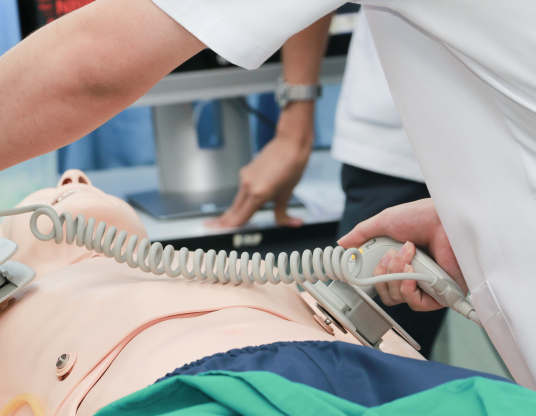Early Defibrillation and AED Usage Techniques : ACLS Course Chapter 7
Defibrillation may be the only treatment to restore normal heart activity and save someone’s life if they go into cardiac arrest. The AED has built-in voice prompts to guide the user in a simple and clear manner. Ventricular Fibrillation (VF) and pulseless Ventricular Tachycardia (VT) are examples of fatal and irregular rhythms that can be corrected by the use of an AED. These are discussed in the next chapter.
Early Defibrillation And Using An AED Video:
BLS survey is used for all cardiac arrest patients:
| STEPS |
ASSESSMENT |
TECHNIQUE/ACTION |
|
| 1 |
Check for response |
- Tap and ask, “Are you all right?”
- Look for breathing by checking for movement of chest (5 to 10 seconds)
|
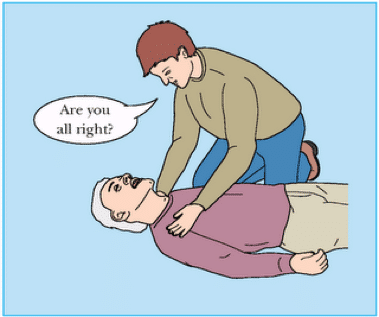 |
| 2 |
Activate the emergency response system and get AED |
- Activate the emergency response system (Call 911) and ask someone to get the AED if help is available
|
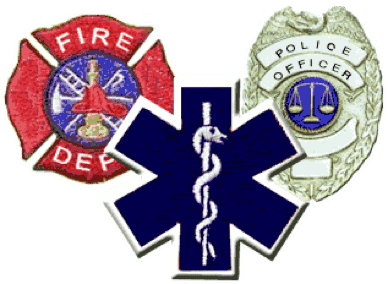 |
| 3 |
Circulation |
- Check carotid pulse (maximum of 10 seconds)
- If no pulse start CPR with 30 chest compressions and 2 breaths
- START WITH COMPRESSIONS FIRST!
- 100 – 120 compressions per minute
- Depth of 2 inches
- If there is a pulse, start rescue breathing at 1 breath every 5 to 6 seconds
|
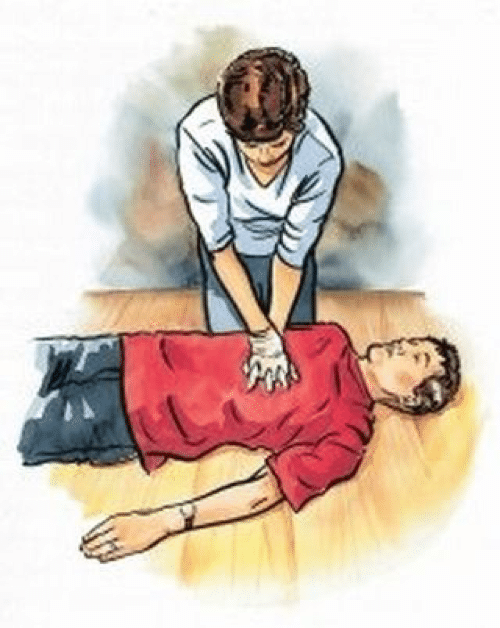 |
| 4 |
Defibrillation |
- Check for shockable rhythm with AED
- Hook up the pads to the patients bare chest
- Give shock when needed – follow instructions on the AED
- After shock start CPR again beginning with chest compressions
|
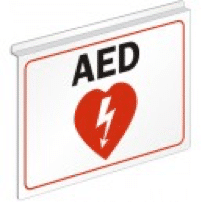 |
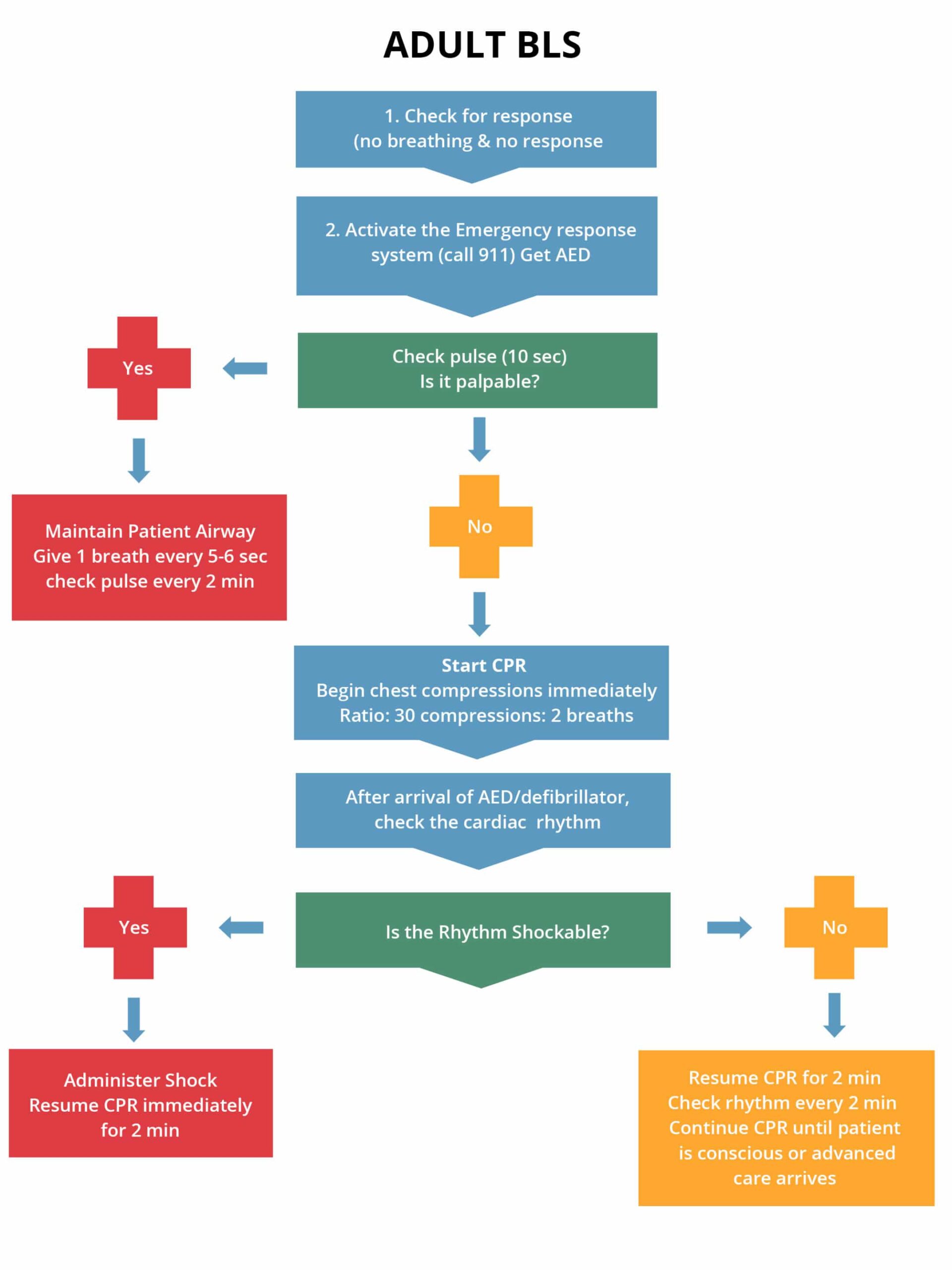
Why is Defibrillation Important?
In a situation where the patient is in cardiac arrest and the rhythm is VF or pulseless VT, defibrillation is the only treatment. Defibrillation stops the arrhythmias from continuing and assists in obtaining normal heart rhythm. ALWAYS REMEMBER DEFIBRILLATION DOES NOT RESTART THE HEART! It “shocks” the heart with electrical impulses. IMPORTANT: IMMEDIATELY RESUME CPR AFTER DEFIBRILLATION! Most common rhythms seen in sudden cardiac arrest are VF and pulseless VT and for that reason early defibrillation is very important.
Steps used to operate AEDs
AEDs may have different models and manufactures, but most of them can be used by using the following steps:
| Step |
Action |
| 1 |
Turn on the AED |
| 2 |
Put the electrode pads to the patient’s bare chest
- Pick the correct pad (adult pads vs. pediatric pads) Use pediatric pads for those under 8 years of age
- Wipe the chest dry if it is wet
- Attach the 2 electrode pads to patient’s bare chest
|
| 3 |
Analyze the rhythm
- Ensure no one is touching the patient – Clear the patient
- AED device might automatically analyze the rhythm or ask you to push a button
- The AED will let you know if shock is advised
|
| 4 |
If shock is needed, CLEAR THE PATIENT
- Ensure no one is touching the patient
- Push the SHOCK button
|
| 5 |
Continue CPR beginning with chest compressions
- Remember 30 compressions to 2 breaths
- The AED device will tell you to repeat steps 3 and 4, after 2 minutes
|
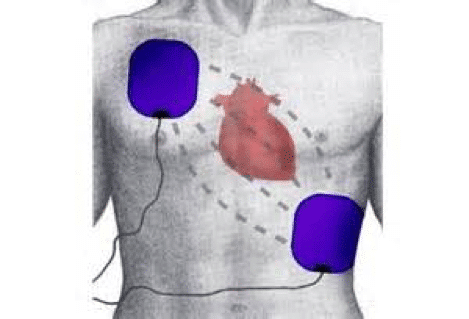
Learning Outcomes:
You have completed Chapter VII. Now you should be able to:
- Apply the BLS Survey Algorithm to VF and Pulseless VT
- Know the importance of Early Defibrillation and Using an AED
